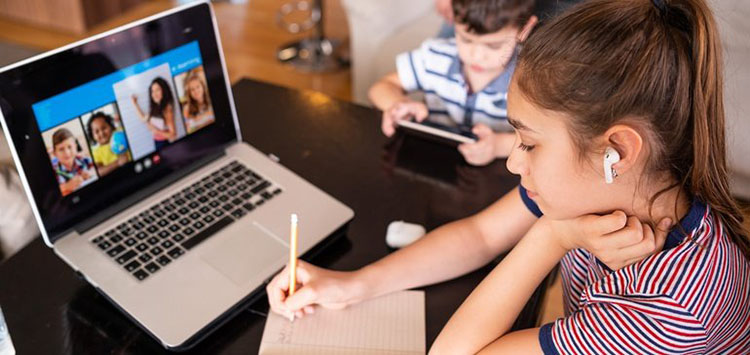
From K-12 Dive
By Shawna De La Rosa
July 21, 2021
Dive Brief:
The pandemic triggered a sharp increase in failing grades, and while the typical remedy is self-paced online classes, the model may not be the best fit for all students due to factors like the lack of direct interaction with a teacher. With additional federal funds available, schools can take the time to tweak the system to improve the credit recovery process, Chalkbeat reports.
Research found younger high school students were less likely to do the required online work, likely due to challenges of self-regulation and motivation. Students who took online recovery courses in the core subjects of math, English and biology also scored lower on end-of-year exams than those who took in-person classes.
Online learning should be monitored by teachers who know the subject and can give students support, and educators should figure out why the student initially failed the course, providing additional direct guidance if it’s because they didn’t understand the work. Disengagement due to virtual learning during the pandemic may also indicate a student isn’t a good fit for online recovery courses.
Dive Insight:
Nationwide, an estimated 15% of students took an online recovery course in the 2015-16 school year. Federal data released in 2018 shows 10% of schools have at least 20% of students enrolled in some sort of credit recovery course. Such courses can help keep students on track for on-time graduation, but many factors play into a student’s success. Researchers have found that high monitor-to-student ratios adversely impact the outcome and may even set students back.
The pandemic prompted a dramatic rise in failing grades. In New Mexico, more than 40% of middle and high school students were failing at least one class in October 2020. In California’s Sonoma county, 37% of students in 10 districts had at least one failing grade compared to 27% last year. To battle this trend, Sonoma-area districts are giving students more time to improve their grades, rather than failing them.
Equitable practices are also a factor in academic performances. Students learning remotely, English language learners and students from low-income households had some of the most difficulty with academic performances during the pandemic.
In Houston’s Cypress-Fairbanks Independent School District, 41% of online-only middle and high school students failed at least one class, compared to 15% of those who attended school in-person. Low-income students and students of color were more likely to only have remote learning options. They were also more likely to opt for remote learning even when in-person learning was available.
English learners are also at high-risk of failing. In Fairfax, Virginia, 47% of EL students underperformed in math and 53% underperformed in English.
Students attempting to recover credits will need a significant amount of support, perhaps for years, according to a report from the Center on Reinventing Public Education. Intensive tutoring is one option, as well as extended learning time and systems to monitor students’ progress. Summer learning also gives districts the opportunity to play catch-up and get a head start on fall.
Photo: valentinrussanov via Getty Images
Read this and other stories at K-12 Dive

